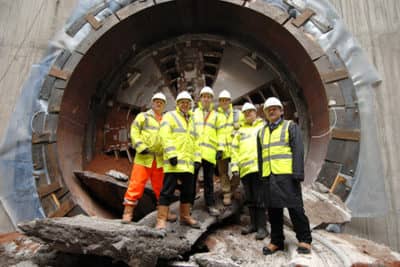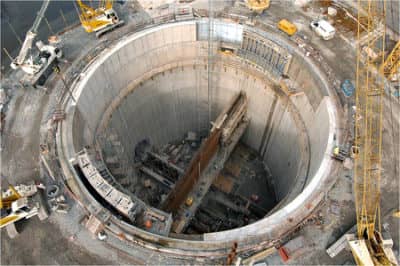Farrans constructed a new six-mile storm water tunnel and terminal pumping station to ease the pressure on Belfast’s historic sewer system and bring it into line with European regulations.
Client
NI Water
The Project
The purpose of the project was to improve the quality of life for thousands of people in Belfast. The Belfast Tunnel controls the risk of flooding and the quality of water for the city’s residents. The tunnels run for a distance of 9.4km under Belfast from Duncrue WWTW to Broadway Roundabout and Ormeau Park.
Project Scope
- To reduce the risk of flooding and provide the City of Belfast with 21st century infrastructure
- 1,400,000m3 of stormwater transferred annually
- 10 new connections
- 9389m of new stormwater tunnel
- 20 new deep access shafts
- 583,000m3 of stormwater transferred to WWTW for treatment
- Remainder screened by 2x8m diameter drum screens to 6mm before discharge at up to 16m3 per second
Key Facts
- The shafts & tunnels required 45,300 precast concrete segments imported from the UK and 20,000 cubic metres of ready-mix concrete produced in Northern Ireland.
- The project excavated in the region of 250,000 cubic metres of spoil.
- The storage volumes within the pumping station when full is 4million gallons of water, equivalent to 7 Olympic swimming pools.
Services & Expertise
The close proximity to local residents presented the need for excellent community relations.
Working with our education system allowed us to introduce the project to the local community, especially local schools alongside the provision of school patrols to help children avoid the sites on their way to and from school.
Working within the residential area we were presented with the challenge of keeping noise disruption to minimum; to achieve this we enclosed our most sensitive shaft sites in sealed acoustic buildings to protect residents from dust and noise.
The Belfast tunnels were being driven through rock, sands and gravels and stiff clays. The TBM’s are Earth Pressure Balance (EPB) machines were selected for their mixed face capability. EPB technology relies on controlled positive pressure in the face of the machine to control water pressure and limit effects on the ground and the potential for surface settlement. Face pressure is maintained by control of the extraction screw and the rate of advance. Additives were employed in the spoil to control pressure across the screw. Polymers made sands and gravels cohesive while foams prevented stiff clays from binding.

